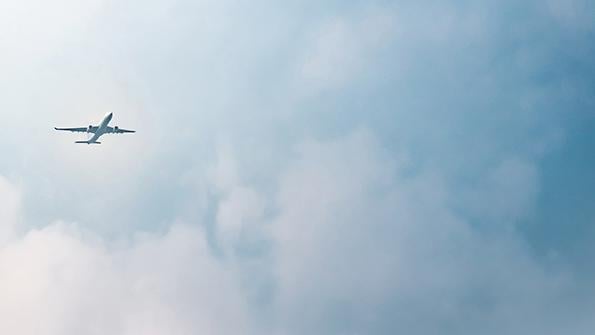The Bright Spots For Aerospace In 2020 | 2020年の航空業界に見られた明るい話題

2020年が終わったことを惜しむ者はほとんどいないだろう。新型コロナウィルスの感染拡大は航空業界を壊滅させ、何万人もの業界関係者が職を失い、中には命を落とした者さえいる。しかし、2020年が終わった今は、壊滅的な1年の中にもいくつかあった明るいニュースを振り返るタイミングではないだろうか。
航空業界をより持続可能なものにするための取り組みは、ロックダウンや研究開発予算の大幅な削減により確実に後退すると思われたが、実際には逆のことが起こった。政府が救済措置の条件として、より環境に優しい航空機の研究開発を要求したからだ。特に注目すべきは、2035年までに水素燃料を用いたカーボンニュートラル機を開発するという、エアバス社が主導したヨーロッパの取り組みだ。一方で、ハイブリッド電気推進や最先端の航空力学の研究も引き続き進められている。ここからどの技術が花開き、2040年の航空機がどのような姿になるかはまだ分からないが、2020年はその火種が生まれた年とされるかもしれない。
堅調な軍事支出がアメリカや西欧で見られ、民間航空機業界やMROの低迷に対する緩衝材として機能した。国防・諜報・国土安全保障マーケットにおいては、従来とは異なる民間向けサプライヤーの 関心が高まっており、競争やイノベーションが拡大している。Aviation Weekの専門家は、新型コロナウィルス関係の政府支援により生じた莫大な負債に対応するため、今後は国防予算も圧迫されると予想しているが、民間部門の回復が充分に進むまでは安定した軍事支出が続けられるだろう。
SpaceX社による初の有人宇宙飛行が成功し、国際宇宙ステーションに宇宙飛行士を送り届けたことはこの年のハイライトのひとつで、宇宙マーケットの民間開放が進むことになるだろう。一方、従来からの政府契約の請負企業も立場を維持するために取り組みを強化している。一例として、ノースロップグラマン社による初のミッション延命機(Mission Extension Vehicle)が挙げられる。これは、燃料切れ寸前の通信衛星にドッキングし、その運用期間を延長するというものだ。
2020年のビジネス機業界は堅調だった。定期便業界よりも好調で、これは2008〜2009年の低迷期とは対照的だ。海外旅行需要が回復するまでは大型ビジネスジェットの運航は引き続き苦戦を強いられることになるが、Aviation Weekのアナリストによると、小型機の運航はすでにコロナ禍以前の水準に回復しているという。
航空関連サプライヤーやMRO業者は厳しい2021年を迎えることになる。しかし、エンジンMROについては2020年の時点で困難に陥っていた。ただし、この不況はサプライヤーやエンジン工場が、新型エンジンの初期不良に対応する修理や部品追加を行う余裕を生み出すことにもつながり、航空会社にとってはプラスの側面もあった。この傾向は、崩壊寸前にまで生産能力拡大を強いられてきた、より広範な航空関連サプライチェーンにも当てはまる。
労働力不足への懸念、パイロット・エンジニア・整備技術者の不足といった事態は、一時的に緩和された。民間機業界で職を失った技術者の中には、政府契約を請負う企業に再就職した者もいる。
ボーイング737MAXをめぐる悪夢の終焉。20ヶ月の飛行停止を経て、ようやくFAAは運航再開を許可した。今後の航空機の認証はより厳格になり、国際的に精査されることで、人々の航空安全に対する信頼が高まることにつながるだろう。
イベント開催や海外渡航が停止されたことで、Aviation Week Networkとしても新しい交流の仕組みを生み出し、様々な混乱や不確実性への対策を提示する必要に迫られた。当社が開催した119回におよぶオンラインセミナーには75,000人以上の視聴者が集まり、当社の編集者・アナリスト・業界首脳陣と意見交換することができた。また我々は数々のオンラインイベントを主催し、378,000人という驚異的な参加者数を記録した。さらに、当社の編集者は何十人もの業界CEOや政府高官と対談し、ウェブ・誌面・オンラインセミナー・動画・ポッドキャストといった多くのプラットフォームを通じて、必要不可欠なビジネスインテリジェンスを提供し続けてきた。
何十億もの人々にワクチンを接種する困難を考えると、業界の回復が始まるのは2021年中盤以降になると思われ、しばらくは厳しい日々が続くだろう。しかし、第一次世界大戦とスペイン風邪の後には、輝かしい1920年代と航空技術の劇的な進化があったことを忘れてはいけない。100年後でも、私は航空業界のポテンシャルに強い自信を持ち続けているだろう。
今年こそは、皆様と直接お会いできることを楽しみにしている。
Aviation Week Intelligence Network (AWIN) のメンバーシップにご登録いただくと、開発プログラムやフリートの情報、会社や連絡先データベースへのアクセスが可能になり、新たなビジネスの発見やマーケット動向を把握することができます。貴社向けにカスタマイズされた製品デモをリクエスト。
Few of us will miss 2020. The COVID-19 pandemic decimated aviation, tens of thousands of industry workers lost their jobs, and some even lost their lives. But now that 2020 is over, it’s a fitting time to be contrarian and note a few of the bright spots amid the carnage.
Efforts to make aviation more sustainable looked almost certain to be set back as the industry went into lockdown and aerospace companies made deep cuts to their R&D budgets. But the opposite happened: As a condition for bailouts, governments demanded more research on cleaner airplanes. Of particular note is an audacious European initiative led by Airbus to develop a hydrogen-powered, carbon-neutral aircraft by 2035. Meanwhile, research into hybrid-electric propulsion and cutting-edge aerodynamics continues to advance. It’s not clear which technologies will break out and what the airplanes of the 2040s will look like, but 2020 might turn out to be the year the spark occurred.
Robust military spending by the Trump administration and upticks in Western Europe provided a cushion for many when the bottom fell out of commercial aviation and maintenance, repair and overhaul (MRO). The defense, intelligence and homeland security markets are also attracting more nontraditional commercial suppliers, broadening competition and innovation. Aviation Week’s forecasters do see defense budgets coming under pressure in future years as governments deal with mountains of debt taken on for COVID-19 relief, but spending should remain stable until a recovery in the commercial sector is well underway.
SpaceX’s launch of astronauts to the International Space Station was one highlight of the year, advancing the commercialization of the space market. Meanwhile, traditional government contractors are upping their game to stay relevant. Northrop Grumman, for example, docked its first Mission Extension Vehicle to lengthen the life of a communication satellite whose fuel was nearly depleted.
Business aviation’s strength in 2020—it fared better than commercial aviation—was a welcome contrast to its performance in the downturn of 2008-09. The upper end of the market will continue to suffer until international travel reopens, but Aviation Week analysts say flight activity for smaller-cabin aircraft has already rebounded to pre-COVID-19 levels.
Aerospace suppliers and MRO providers are facing a painful 2021. But aircraft engine MRO already was in disarray heading into 2020. The downturn has given manufacturers, suppliers and engine shops the ability to catch up on fixes and tech insertions for new engines that were experiencing teething problems. That’s good news for airlines. The same paradigm applies to the wider aerospace supply chain, which was so taxed by production ramp-ups that it was in danger of breaking.
Concerns about workforce shortages—pilots, engineers, maintenance technicians—have temporarily abated. Some technical workers who lost jobs in the commercial world have found new homes with government contractors.
The end of Boeing’s 737 MAX nightmare seems to be at hand now that the FAA has cleared the aircraft to return to service after a 20-month grounding. Future aircraft certifications will be more rigorous and subject to greater international scrutiny, helping strengthen public confidence in aviation safety.
The shutdown of events and travel forced us across the Aviation Week Network to find new ways to connect our industry and provide answers amid all the chaos and uncertainty. Our 119 webinars were viewed live by more than 75,000 people who were given the opportunity to interact with our editors, analysts and industry leaders. We also hosted numerous virtual events that drew a staggering 378,000 attendees. And our editors spoke this year with dozens of CEOs and top government officials, conveying vital business intelligence across an array of platforms—online, print, webinars, videos and podcasts.
Given the challenge of vaccinating billions of people, the industry’s recovery probably won’t begin until mid-2021 and will be arduous. But remember that World War I and the Spanish flu were followed by the Roaring Twenties and an era of great innovation in aviation. One hundred years later, I remain bullish on our industry’s potential.
I hope to see you—in person—this year.